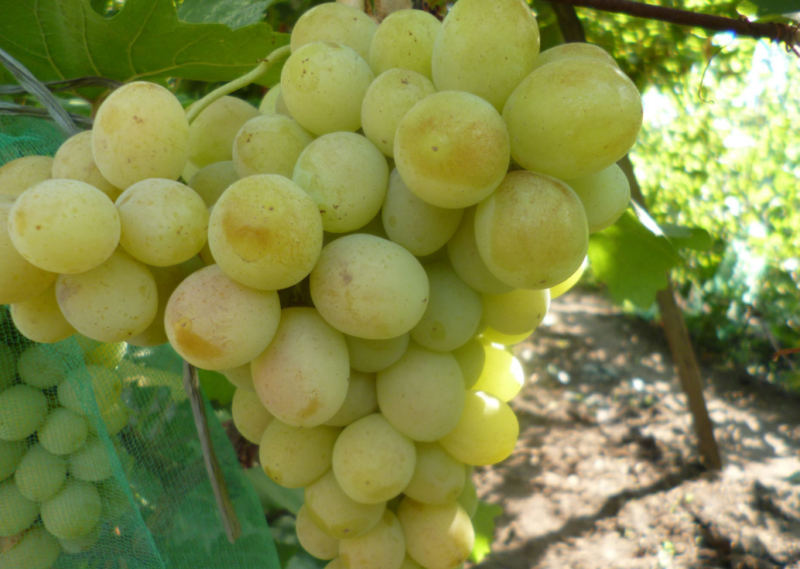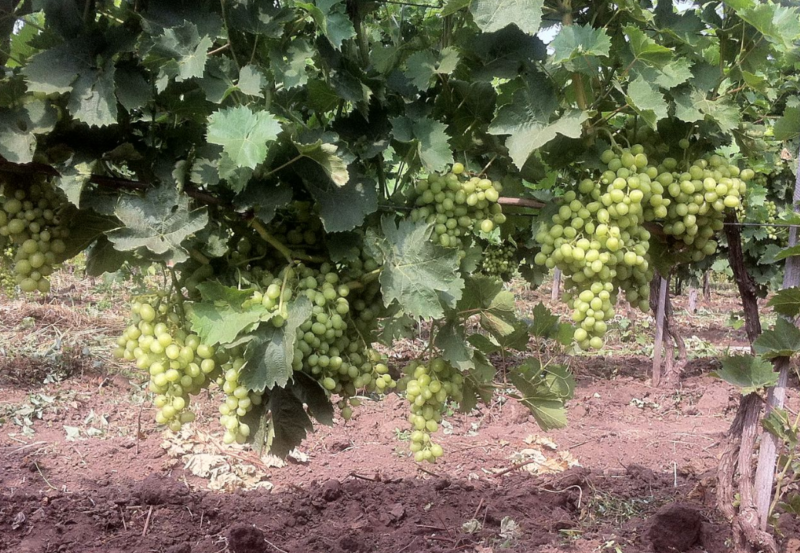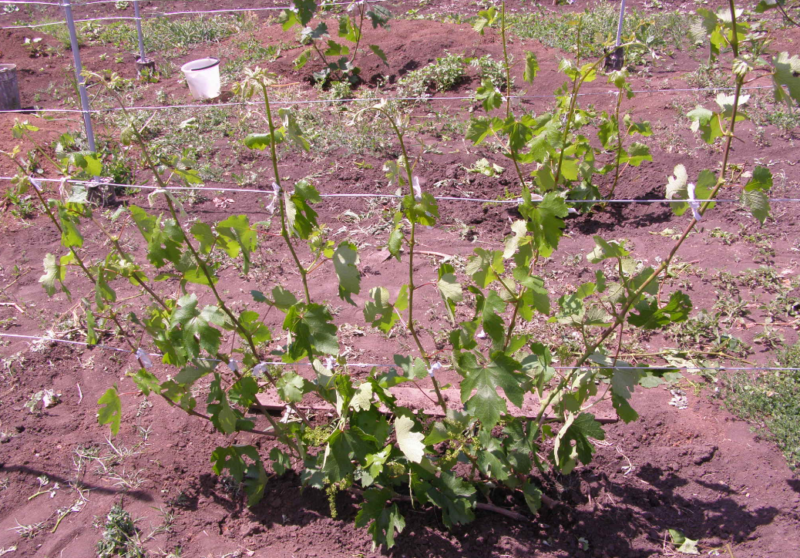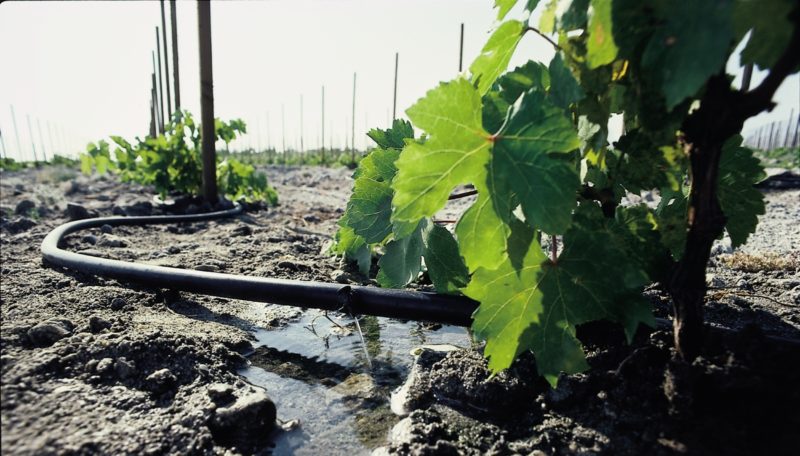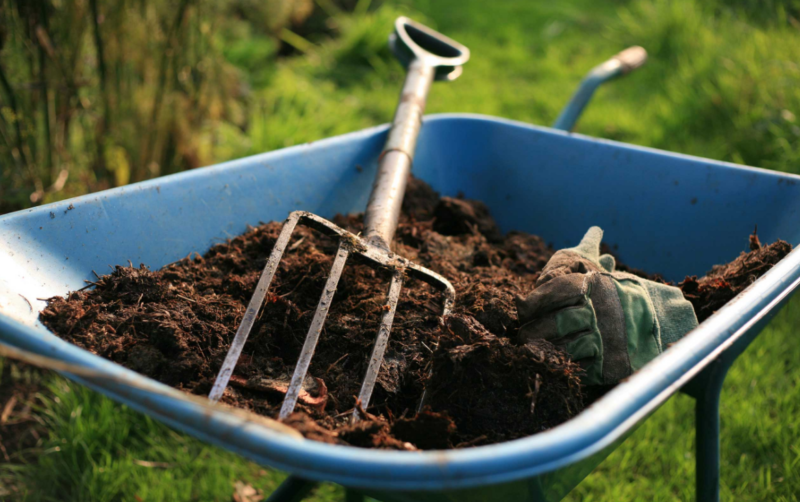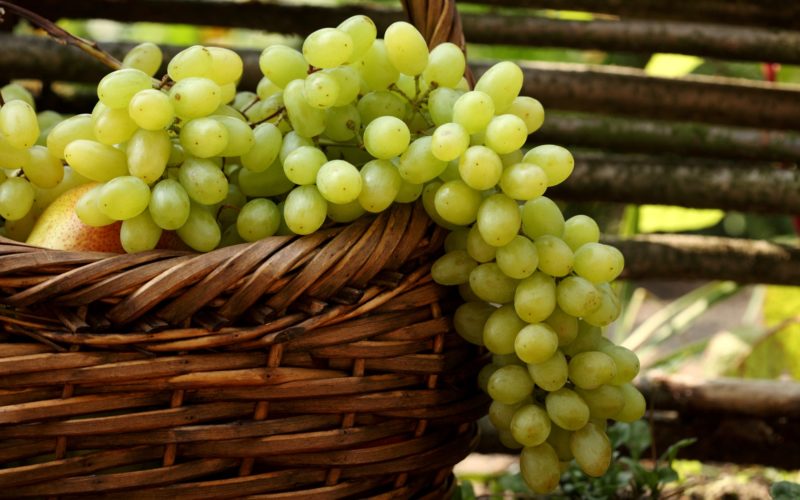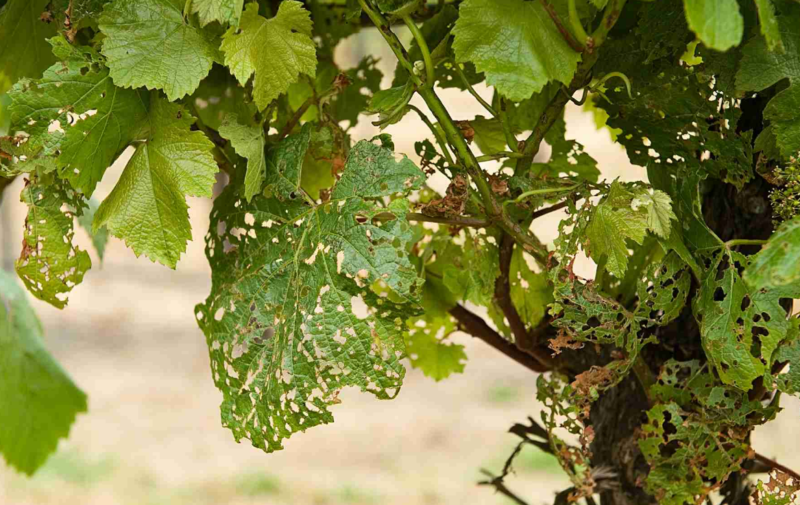Talisman - item that brings luck. The authors have not in vain named this variety. Even an inexperienced winegrower, a well-planted bush will give an excellent harvest of delicious large berries, if you follow the agricultural technology. And the description of the characteristics of the Talisman grape variety will help him in this.
Material Content:
Description of grape variety Talisman
This variety is known to winegrowers under various names: Kesha, Kesha-1, Kesha-muscat. But since 2016, it has been present in the State Register of Breeding Achievements under the original name - Talisman, the working name during breeding is FV – 6–6. When more than 30 years ago, employees of VNIIViV them. Ya. I. Potapenko in the city of Novocherkassk developed a new variety by crossing Moldavian Frumoasa Albe and Rapture previously bred at the same institute - it was a breakthrough. A grape with such remarkable characteristics, giving large berries, then just did not exist. Southern varieties are good, but the Talisman favorably differed from them in increased frost resistance.
Over the years, new hybrid forms have been created that can compete with it in many respects, but the grape variety Talisman Kesha does not give up its positions. And the reason is the extraordinary resilience and plasticity. No wonder it served as the basis for many hybrid forms.
We begin the description of the variety with the appearance:
- A powerful root system is able to well nourish a bush of considerable size, 75% of the shoots of which are fruitful.
- Beautiful, strongly carved five-lobed leaves are saturated green. At a young age, a slight bronze tint is noticeable on them.
- The Talisman has large, conical or cylindrical slightly loose clusters, the berries on which are located freely. This allows them not to deform.The weight of one bunch is from 800 to 1100 g, but good care allows you to increase it.
Particular attention - berries:
- On the long combs there are oval, very large berries - 3.5X3.1 cm.
- The weight of the berry can reach 20 g, but on average - from 12 to 16 g.
- Their color is light, during full ripening a small “tan” is noticeable on the side facing the sun.
- The taste of the berries is harmonious, with a noticeable muscat aroma when fully ripened.
- Sugar accumulation is very high. In years with good weather, it can reach 23%, with a lack of sunny days - up to 17%. Acidity from 6 to 8%.
- There are no more than 3 seeds in each berry, the skin is very thin, and is practically not felt when consumed.
- Berries remain on the bush for a long time, but can be damaged by wasps. They are also loved by birds.
- The transportability of berries is good, and the application is universal.
And this is not all the advantages of the variety:
- medium early in the south and average in the Central region ripening period is 135 days (the sum of active temperatures required for ripening is 2600-2800 degrees);
- the variety is early, sometimes a signal brush may appear even in the second year after planting;
- almost 100% rooting of cuttings;
- high adaptability to growing conditions and various climates;
- good frost resistance - up to -25 degrees;
- increased resistance to fungal diseases.
The sum of active temperatures is the most important indicator that determines the possibility of varieties ripening in a given climatic zone. It is calculated by summing the temperature indicators of all days, when the daily average values exceed +10 degrees. The average CAT values for each region are in special tables.
The nuances of growing
Due to its plasticity, Talisman grapes grow well on different types of soils. But the maximum yield is obtained on chernozem, fertile sandy loam or loam with an acidity close to neutral or slightly alkaline, without stagnation of water.
Requirements:
- full lighting throughout the day;
- protection from prevailing winds;
- spacious landing - for powerful bushes, the distance between plants should be greater than the standard, from 3 to 4 m.
Features of the formation of the bush:
- total load - no more than 32 eyes;
- the load on each fruitful shoot is 2, rarely 3 brushes.
The yield of grapes Talisman is very high, so the number of flower brushes have to be normalized.
Outdoor landing
Planting dates depend on several factors: the region of cultivation, the readiness of the planting pit, the time of acquisition of the seedling. But for good survival it is necessary that he be at rest. In the southern regions, autumn planting is preferable, in the central zone - spring planting, with protection against return frosts.
For a single bush, its orientation in parts of the world does not matter. If there are several of them, the rows are arranged from north to south. On the slopes, the orientation is different - from west to east.
Landing Algorithm:
- In the previous season before planting, they process the entire area of the future vineyard - they dig it deep with fertilizers, the amount of which depends on the fertility of the soil. At the same time, liming is carried out, if required. The minimum period between the preparation of the pit and the planting of the seedling is 2 weeks.
- To plant one plant, they dig a hole with a size of 90X90 cm - for the good development of a powerful root system of the Talisman, you need room. For an ordinary landing, it is better to dig a trench 90 cm wide and deep.
- The upper fertile layer is mixed with humus - up to 30 kg per well, superphosphate - up to 800 g, ash - about 1 kg. The amount of nutrients is determined by the fertility of the soil.
- Drainage is not equipped only when growing grapes in the sand. In all other cases, a 10 cm layer of pebbles, broken brick or rubble with a fraction of at least 3 cm will be required. It is covered with a thin layer of coarse sand.
- At the bottom of the pit, on the western side, a plastic pipe with a diameter of 5 cm is installed for irrigation and fertilizer.
- They fill the hole with the prepared planting mixture until its depth is 50 cm. It is in this layer that the main mass of the grape roots should be. Pour 1-2 buckets of water. It should have a temperature of 30-40 degrees.
- A seedling is placed on a small mound of soil, the roots of which are slightly trimmed (about 1 cm), and 4 buds remain on the shoot when it is single, and 2 each if it is a pair.
- The straightened roots are covered with planting mixture to the top of the pit and watered again, spending up to 2 buckets of water.
- The soil around the bush is mulched with peat, straw or humus, and the seedling itself is shaded.
How to care for grapes
The grape needs regular watering and top dressing, fixing the shoots on a support, the formation and loosening of the soil with the removal of weeds.
For young bushes after planting, watering should be weekly, and in the presence of rain every 2 weeks. After rooting, beginning in late May, they are moistened once a month.
Adult plants require 3 waterings per season:
- before flowering, in about 2 weeks;
- after the formation of an ovary the size of a pea;
- in the fall, after leaf fall (water-loading irrigation).
20 liters of warm water are spent on a young bush, up to 70 liters on an adult.
If the winter was not very snowy and the spring does not have enough moisture in the soil, spring water-charging irrigation may be required immediately after opening the bushes. If you hold it with warm water, the plant's vegetation will begin faster, when watering with cold water, your eyes open more slowly, which will save them from spring frosts.
You can not water the grapes during flowering (the flowers fall), during the ripening period (berries crack, they spit slower), in August (ripening of the vine is delayed).
Irrigation and irrigation is also unacceptable - this is a sure way to the development of fungal diseases.
To get high yields, the Talisman needs a lot of nutrients.
They are introduced in the form of root and foliar top dressing:
- Immediately after removing the winter shelter - 40 g of superphosphate with deep incorporation of loosening.
- A week before flowering - 40 g of complete fertilizer per 1 sq. Km. m with the addition of 5 g of boric acid and 4 g of sodium humate.
- 2 weeks after the flowers fall, the same composition, but without additives.
- At the beginning of ripening berries - 25 g of superphosphate and 50 g of potassium sulfate.
- When the crop is harvested - 50 g of potassium sulfate.
For better development, spraying the leaf apparatus with fertilizer solutions is used, while simultaneously preventing fungal diseases.
Preparation of top dressing:
- daily infusion 200 g of superphosphate with 3 l of water is drained from the precipitate. 30 g of ammonium nitrate, 50 g of ammonium sulfate, 100 g of potassium sulfate, 10 g of boric acid and 100 g of copper sulfate are mixed with dissolved in 2 l of water;
- mix the resulting solution with 100 g of freshly slaked lime dissolved in 5 l of water, achieving a neutral reaction (check with a litmus test);
- Bring the volume of the resulting solution with water to 10 liters.
The schedule of foliar top dressing:
- before blooming, in 2-3 days, both the leaves and the sleeves and stamb are sprayed;
- when the berries are pea-sized - the same composition, but without boric acid, lime and copper sulphate. To obtain a neutral reaction add a solution of drinking soda;
- when the berries begin to sing - the same composition as in the second top dressing, but without urea;
- before harvesting, the daily infusion of superphosphate (200 g per 3 l of water) is mixed with the daily infusion of ash (450 g per 3 l of water), brought to neutrality with a solution of drinking soda and add water to a volume of 10 l.
Foliar top dressing is carried out in cloudy, calm weather.
Plant pollination
In grapes, the Talisman flower is functionally female. This means that a single-planted bush will bloom, but will not produce berries. In order to get a crop, pollinator varieties must grow next to it. Karmakod, Aleshenkin, Kishmish-342 are best suited for this. Talisman needs additional artificial pollination of grapes in years with bad weather conditions.
Cropping Features
Pruning is carried out outside the period of sap flow.In the southern regions - in the spring, in the central - only in the fall. When unilaterally formed, one knot of substitution and one fruit shoot are left. It is cut into 8 eyes. Grape pruning in the fall is carried out for the correct formation of the bush. In the spring, before the sap flow begins, the frozen parts are cut off.
In summer, barren shoots and stepsons are removed so that all the forces of the plant go to the formation of the crop.
How to increase productivity
Grape Talisman yields high. But fully brush in the south. In the Central Region, berries may not accumulate enough sugars due to lack of heat.
To increase the temperature in the bush area, the following methods are used:
- landing next to the buildings on the south side, backing 40 cm;
- the construction of a reflective screen of white material or foil on the north side of the bush;
- protection against rain with visors - dry soil keeps heat better;
- mulching the soil with black materials - spunbond or humus;
- digging around a bush of bottles of dark glass obliquely.
All these techniques increase SAT and affect crop quality.
Protection against diseases and pests
The Talisman has increased resistance to fungal diseases. As their prevention, foliar top dressing is used, as described above.
Of the pests, the Talisman is most often affected by a spider mite - the leaves acquire a brown hue. To destroy it, they are treated with acaricides every 12 days, starting immediately after removing the shelter.
To combat grape itching (green tubercles on the leaves), which the Talisman is most often affected by other varieties, spray bushes with Nitrafen before the leaves bloom, then they are treated with colloidal sulfur or insecticides: Actellik, Neoron, Talstar.
To prevent wasps from damaging the berries, mesh bags with small cells are put on clusters.
Talisman - a grape variety with excellent characteristics, it is worthy of being in every garden.


